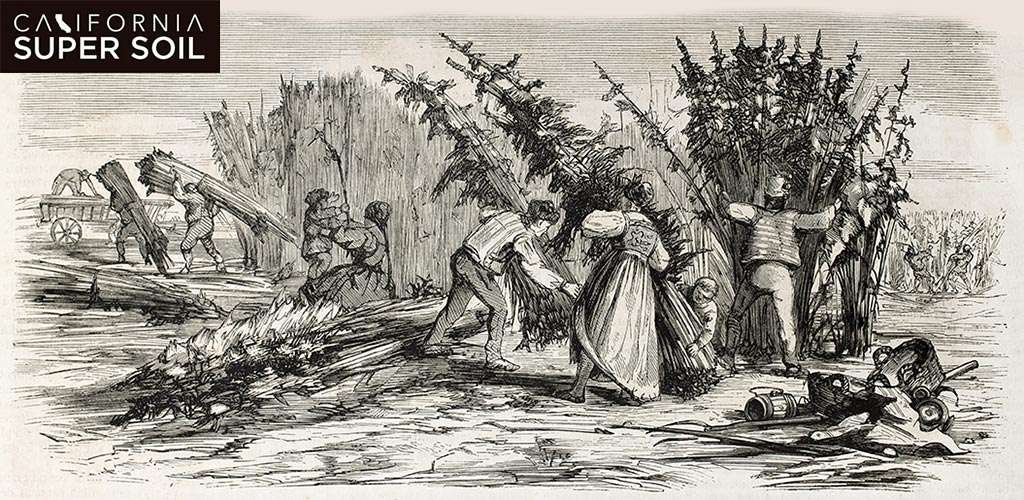A Knowledgeable and Insightful History of The Plant: From Ancient Origins to Modern Developments
These are plants with a rich and complex history, that has been intertwined with human civilization for thousands of years. Its uses have spanned from medicinal and industrial applications to religious and recreational purposes. This article delves into the multifaceted journey of the herb, tracing its origins, cultural significance, legal challenges, and contemporary status.
Ancient Beginnings
The earliest known use of the herb dates back to ancient China. Around 2727 B.C., Emperor Shen Nung, often regarded as the father of Chinese medicine, documented the herb in his pharmacopeia, highlighting its potential to treat various ailments. Archaeological evidence suggests that the herb was cultivated in Japan since the pre-Neolithic period for its fibers and as a food source, with hemp seeds discovered in sites dating back to 8000 B.C. DEA Museum
In India, the herb held a sacred status. It was associated with Lord Shiva, one of the principal deities, earning him the epithet “The Lord of Bhang,” referring to a herb preparation consumed during religious ceremonies. Ancient Hindu texts mention the use of the herb to treat ailments such as arthritis, depression, and asthma.
The Scythians, a nomadic group from Central Asia, were known to use the herb in their rituals. Greek historian Herodotus, writing around 480 B.C., described how Scythians inhaled vapors from hemp seeds, both as a ritualistic practice and for pleasure. Similarly, in ancient Assyria, the herb was utilized for its psychoactive properties in religious ceremonies, referred to as “qunubu,” a term that some scholars believe is the origin of the modern words we use today to refer to the herb.
Spread Across Continents
The use of the herb spread across various civilizations over the centuries. In the Middle East, it was introduced to Iraq around 1230 A.D. during the reign of Caliph Al-Mustansir Bi’llah. By the 12th century, a concentrated form of the herb had become popular in Egypt, particularly among Sufi mystics who used it to enhance spiritual experiences.
In Africa, the herb was introduced by Indian travelers and subsequently spread by Bantu settlers migrating southward. By the 1850s, Swahili traders had carried the herb from the east coast to the Congo Basin in the west. Smoking pipes uncovered in Ethiopia, carbon-dated to around 1320 A.D., were found to contain traces of the herb, indicating its use in the region during that period. Wikipedia
Europe’s interaction with the herb began primarily for its industrial applications. Hemp, was cultivated for its strong fibers used in making ropes, sails, and clothing. By the 16th century, hemp had become an essential crop in countries like England, where King Henry VIII mandated its cultivation to support the navy.
The Spanish introduced the herb to the Americas in the mid-16th century, cultivating it in Chile for its fiber. By the early 17th century, hemp had become a staple crop in North American colonies, with laws in places like Virginia requiring farmers to grow it.

Medicinal Applications
Throughout history, the herb has been recognized for its medicinal properties. In ancient China, it was used to treat ailments such as gout, rheumatism, and malaria. The ancient Egyptians reportedly used the herb to treat glaucoma and general inflammation. In India, it was utilized to alleviate pain and was considered a remedy for various conditions. By the 19th century, the herb had made its way into Western medicine. Irish physician William Brooke O’Shaughnessy, working in India, introduced the herb to Western medicine in 1842 after observing its therapeutic applications in treating muscle spasms and pain. Recovery.org
Early Restrictions and Prohibitions
Despite its widespread use, the herb began to face legal restrictions in various parts of the world. In the 14th century, the Emir Soudoun Sheikouni of Arabia reportedly prohibited its use. In 1787, King Andrianampoinimerina of Madagascar banned the herb throughout his kingdom, enforcing capital punishment for its use.
The colonial era saw further restrictions. In 1830, Rio de Janeiro’s Municipal Council prohibited bringing the herb into the city, targeting its use among slaves. Similarly, British colonies like Mauritius (1840) and Singapore (1870) enacted bans due to concerns over its use among Indian laborers.
In the United States, the first restrictions on the herb sales appeared in 1906 in the District of Columbia. By the 1920s and 1930s, a wave of herb prohibition swept across the country, culminating in the Marihuana Tax Act of 1937, which effectively criminalized the herb at the federal level.
International Regulation
The early 20th century marked the beginning of international efforts to regulate the herb. The 1925 International Opium Convention included provisions to control the trade of “Indian hemp,” requiring countries to issue certificates for its importation and limiting its use to medical and scientific purposes. These measures laid the groundwork for future international treaties aimed at controlling narcotic substances.



